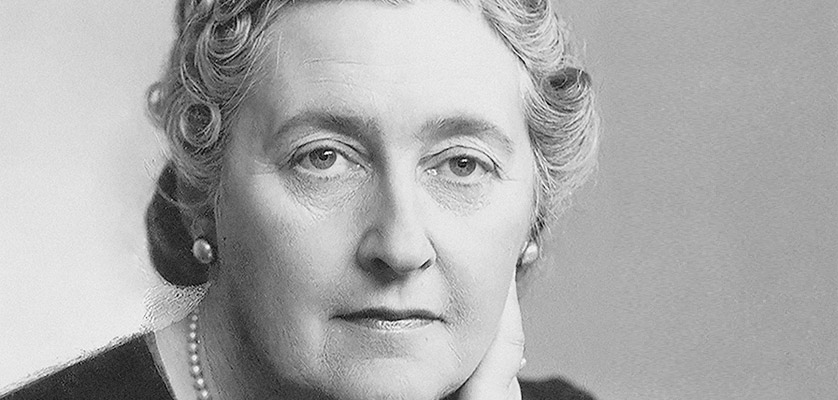Agatha Christie: Murder on the Orient Express
As one of the greatest authors Britain has ever produced, Agatha Christie has sold over two billion copies of her works. Encompassing 66 detective novels, 14 short stories, six romance novels (under the pseudonym Mary Westmacott) and the longest-running play in the world, The Mousetrap, Agatha's literary portfolio is nothing short of exceptional.

Credit: Wikipedia
Agatha's early life
Born in Torquay in 1890, Agatha endured a shy and lonely childhood. As she didn’t go to school and mix with other children, perhaps it was this that allowed her imagination to flourish - she would often make up worlds involving imaginary friends. In her autobiography, Agatha stated that she was very creative and possessed a vivid imagination, which would often overburden her. Yet, it was thanks to her lively imagination that she enjoyed such a successful literary career.
Agatha's imagination was further sparked following her marriage to an archaeologist in 1930. Through her husband's work, Agatha would often accompany him on digs overseas. Her travelling experiences were often the source of inspiration for her many novels, including the Murder on the Orient Express, as she herself experienced this famous train ride.
Murder on the Orient Express
Agatha's detective novel, Murder on the Orient Express, was published in the UK in 1934. Regarded as one of her greatest novels of all time, the plot centres on the Orient Express train that gets stuck in a snowdrift in Vincovci, in eastern Croatia.
Packed full of passengers, including Agatha's famous Belgian detective character, Poirot, a murder takes place. The victim, an elderly American man, claiming to be called Samuel Ratchett, is later discovered to be not who he seems, and it's up to Poirot to piece all the parts of the jigsaw together, to solve this who-dunnit crime.
Agatha's own experiences on the Orient Express in 1928 inspired much of the plot, with some of the characters in the book even being taken from passengers she travelled with. Agatha also discovered the train got stuck in a blizzard some months later near Turkey, which added to her storyline ideas. The murder theme took inspiration from the real-life murder of Charles Lindbergh's son in 1932.
Many of the train's details had been carefully noted down by Agatha on her own journey on the Orient Express, including the position of the door handles and small details within each carriage. Often, these were pivotal to the plot, making Poirot's investigation very convincing.
Adaptations
Murder on the Orient Express has been adapted several times over the years. The first time was in 1974, when the novel was turned into a film starring Albert Finney, Sean Connery and Ingrid Bergman. It was a massive success, scooping an impressive nine awards.
In 2004, the famous detective story was once again adapted, but this time for BBC Radio 4, with John Moffat featuring as Poirot. A PC game of the same name was released in 2006 and adaptations of the book have been shown on TV.
More recently, a 20th Century Fox feature film was adapted and released in 2017. It was directed by Kenneth Branagh, who also starred as Poirot.
It's easy to see why Agatha was inspired so much by her experiences on the Orient Express. This iconic train, now renamed as the Venice Simplon Orient-Express, travels almost 100,000 miles in the course of one season.
<iframe width="100%" height="50%" src="https://www.youtube.com/embed/Mq4m3yAoW8E" frameborder="0" allow="accelerometer; autoplay; encrypted-media; gyroscope; picture-in-picture" allowfullscreen></iframe>
Along with other components, high-tech hydraulics are a vital feature of the train, allowing the engine and automatic doors to function effectively. State-of-the-art engineering is used to keep the wheels running smoothly on the tracks, even in snowy weather!
Whether you require hydraulics for something as powerful and majestic as the magnificent Orient Express, or you are working on something on a smaller scale, you can rely on the specialist hydraulic services at Phoenix Hydraulics.


